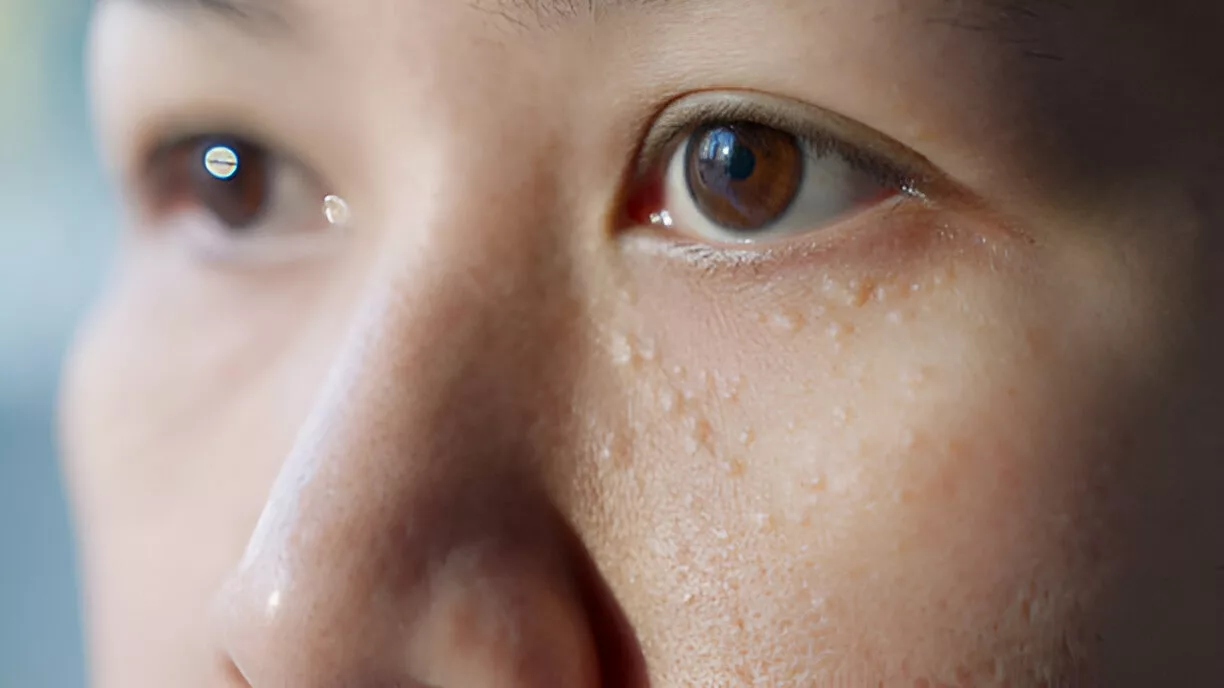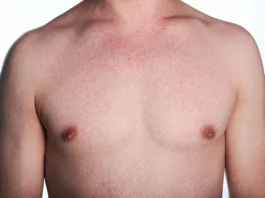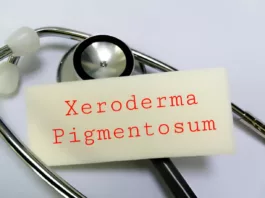Syringomas are a harmless skin condition. They are small, benign tumors that occur in sweat glands on various parts of your body. Syringomas are common among specific patient populations and mainly develop on the cheeks or lower eyelids.
What is a Syringoma?
A syringoma is a benign adnexal tumor that arises from your sweat glands, which are skin appendages/adnexes. The word “syringoma” is derived from Greek. It is a combination of two words— “syringe” means rod or pipe, and the suffix “-oma” refers to a swelling or tumor.
Syringomas often occur in clusters and are firm, skin- or yellow-colored bumps that are 1mm to 5mm in size. Syringomas are not associated with itching or pain, so a dermatologist should immediately examine any syringoma-like lesion with symptoms. They affect 1% of the general public and can occur in different parts of your body, such as:
- Lower eyelids
- Upper cheeks
- Forehead
- Chest
- Armpits
- Abdomen
- Genitalia1Deshmukh, R. S., Deo, P. N., Pawar, S. R., & Karandikar, M. (2023). Syringoma – a rare tumor: Case report and review of the literature. Journal of Oral and Maxillofacial Pathology/Journal of Oral and Maxillofacial Pathology, 27(4), 768–771. https://doi.org/10.4103/jomfp.jomfp_415_23
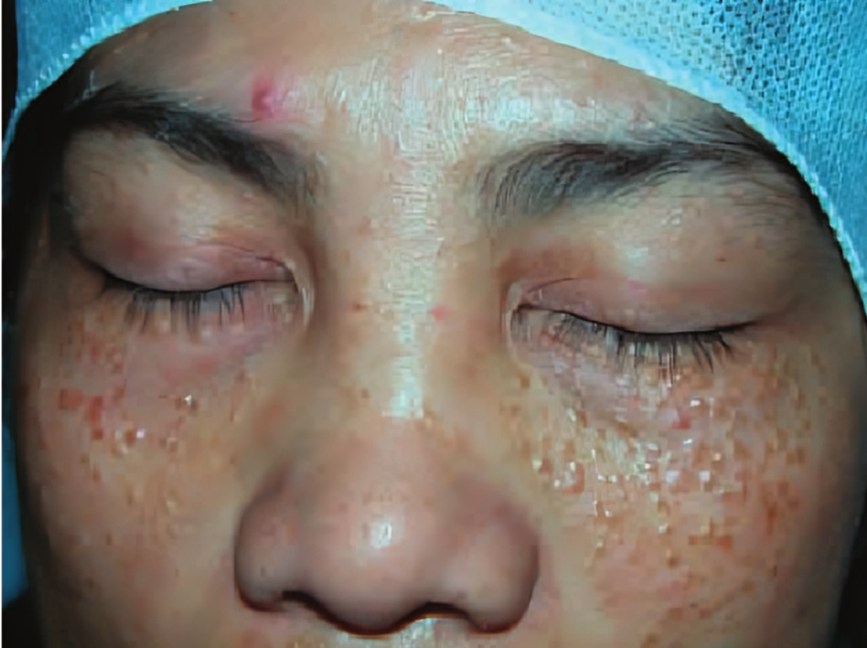
Causes of Syringoma
Syringomas are a result of overactive eccrine glands in your skin. Eccrine glands work to maintain your body temperature by producing fluid for evaporation. Anything that increases the production of sweat can increase your chances of getting syringomas:
- Exercise
- Stressful environments
- Hot, humid climate
- Hormonal fluctuations
Syringoma Risk Factors
A few factors can predispose you to developing syringomas, including:
- Being a female
- Being a young adult
- Having a light skin complexion
- Being Japanese
- Having a medical condition such as:
o Down syndrome
o Diabetes
o Marfan syndrome
o Brooke-Spiegler sydrome - Being pregnant
- Right before getting your period2Litvinov, I. V., & Fatemeh Jafarian. (2013). Eruptive syringomas in the groin. CMAJ. Canadian Medical Association Journal, 186(8), 612–612. https://doi.org/10.1503/cmaj.130793
Is Syringoma Hereditary?
Yes, you could be genetically more likely to get syringomas on your skin. They are often associated with genetic conditions such as Down syndrome—one in five individuals with Down syndrome develops syringomas at some point in their lives. In addition, familial syringomas are a rare type of syringoma that run in families.3Schepis C, Siragusa M, Palazzo R, Ragusa RM, Massi G, Fabrizi G. Palpebral syringomas and Down’s syndrome. Dermatology. 1994;189(3):248-50. doi: 10.1159/000246847. PMID: 7949476.
Types of Syringoma
In 1987, Friedman and Butler classified syringomas into four major types based on their clinical presentation:
- Localized
- Generalized
- Down’s syndrome-associated
- Familial4Friedman, S. J., & Butler, D. F. (1987). Syringoma presenting as milia. Journal of the American Academy of Dermatology, 16(2), 310–314. https://doi.org/10.1016/s0190-9622(87)70041-3
However, there are some other types of syringomas, too, including:
- Clear-cell syringoma
- Chondroid syringoma
- Malignant choroid syringoma
Localized Syringomas
Localized syringomas are the most common presentation of syringomas. They are limited to one region of your body, such as the periorbital part of your face, around your eyes. Localized syringomas further have two main types:
- Solitary syringomas, which present as one nodule, papule, or bump on your skin
- Multiple-unifocal syringomas, which occur in clusters in the small, localized part of your body
Syringomas Associated with Down Syndrome
At least twenty percent of people with Down syndrome have syringomas— and the percentage rises to 40% in specific populations. This means they are thirty times more common in people who have Down syndrome as compared to people without.
Generalized Syringomas
Unlike localized syringomas, generalized syringomas have widespread development on different parts of the body. They usually have two clinical manifestations:
- Multifocal generalized syringomas have different “foci” or clusters of syringomas that develop gradually over time.
- Eruptive generalized syringomas suddenly develop all over your body, like an eruption. They usually appear on the bodies of women of color around puberty.
Familial Syringomas
Familial syringomas are usually eruptive. They run in families and are considered to be inherited in an autosomal dominant pattern. They are a sporadic form of syringoma.
Clear-cell Syringoma
Clear-cell syringomas are distinctive in that they have a “clear cell change” in the cells of the eccrine sweat glands. The accumulation of glycogen and lipids gives these cells a particular pale or clear appearance. Clear-cell syringomas are most commonly associated with diabetes mellitus.5Lin, L. Y., Nahyoung Grace Lee, Yoon, M. K., & Stagner, A. M. (2022). Clear Cell Syringoma of the Eyelids, a Distinctive Histopathologic Variant Associated with Diabetes Mellitus. Ophthalmic Plastic and Reconstructive Surgery, 39(1), e20–e22. https://doi.org/10.1097/iop.0000000000002254
Chondroid Syringoma
Chondroid syringomas are “mixed” tumors of the sweat glands. They have both epithelial and mesenchymal components, which are derived from different layers of the body in utero. They occur less than 0.1% and are often confused with epidermal cysts.6Kyung Hee Min, Jin Hwan Byun, Jung Soo Lim, Hye Kyung Lee, Won Mi Lee, & Jong Eun Joo. (2016). Chondroid Syringoma on Face. Archives of Craniofacial Surgery, 17(3), 173–175. https://doi.org/10.7181/acfs.2016.17.3.173
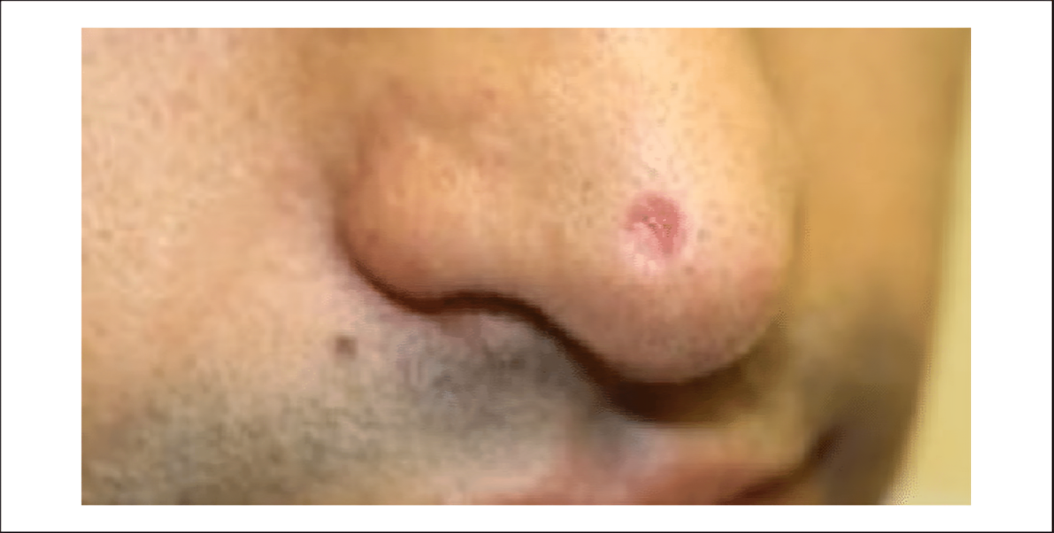
Malignant Choroid Syringoma
Malignant choroid syringoma is the least common type of syringoma. It is the cancerous counterpart of choroid syringoma. Its prevalence is less than 0.005%. Despite being a rare skin disorder, it is hard to detect because of its resemblance with benign conditions. It requires surgical treatment.7Meredith, A., Jenny Maureen Atun, & Fernando, G. (2016, March 30). Multifocal, recurrent malignant chondroid syringoma with visceral metastases: A case report and literature… ResearchGate; International Journal of Cancer Therapy and Oncology. https://www.researchgate.net/publication/305383210_Multifocal_recurrent_malignant_chondroid_syringoma_with_visceral_metastases_A_case_report_and_literature_review
How is Syringoma Diagnosed?
The diagnosis of syringoma is usually made through a thorough clinical examination. In rare cases, a tissue sample is analyzed to rule out dangerous skin conditions.
History & Physical Exam
Your doctor will take a detailed medical history because factors like birth sex, ethnicity, and occupation significantly affect your chances of getting syringomas. They will also ask about sun exposure and whether you often encounter high temperatures.
During the physical exam, your doctor will carefully check your skin for small brown, pink, or yellow bumps. They will inspect the locations where syringomas usually occur, especially near your eyes and cheeks. They will also ask you if you have noticed any bumps near your genitalia or on your torso.
Dermoscopy
Dermoscopy is a specific part of the skin exam in which your doctor uses an instrument called the dermatoscope to check the surface of your skin closely. This procedure employs magnification under a light source to better view the syringomas.
Syringomas usually appear to be round or oval structures, 1mm to 5mm in diameter, and have a characteristic look upon observation under a dermatoscope:
- There are multiple clusters of pigment which are darker than the regular color of the surrounding skin.
- These pigmented clusters have a web of closely occurring, overactive eccrine sweat glands. They are larger than what is seen in normal skin.
- Many white dots are also seen within the clusters. These dots represent the keratin and other small structures filling the sweat glands. They are more prominent than those with unaffected skin.
Skin Biopsy
Skin biopsies are the definitive investigation for diagnosing syringoma. However, they are usually not used for facial syringomas because they can leave scars and cause cosmetic issues. Therefore, dermatoscopy, a much more readily available and quick alternative, is preferred in most cases.
Biopsies are usually taken when an individual is at risk for developing skin cancer or has progressive symptoms like itching and pain accompanying syringoma-like lesions. A deeper biopsy is required to check for microcystic adnexal carcinoma, an aggressive tumor of the head and neck that affects the sweat glands.
In addition, choroid syringomas have a meager chance of developing into malignant choroid syringomas, so a skin biopsy is essential for early identification.8Shea, C. R. (2020, February 7). Syringoma Workup: Procedures, Histologic Findings. Medscape.com; Medscape. https://emedicine.medscape.com/article/1059871-workup
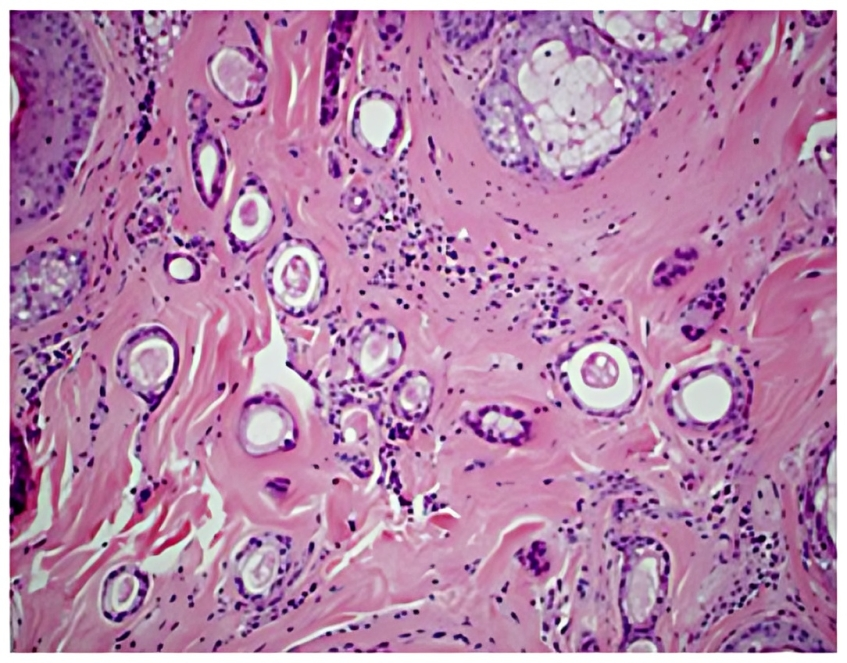
What can be mistaken for a Syringoma?
Syringoma usually has an unremarkable presentation that resembles many different skin conditions.
Syringoma Vs. Milia
Milia are superficial, cystic skin lesions that are full of keratin. They are usually lighter in color and rounder than syringomas.
Syringoma Vs Lichen Planus
Even though some subtypes of localized syringoma and lichen planus are similar, lichen planus is usually purple-colored and itchy, unlike syringomas, which resemble the skin or are yellow.
Syringoma Vs. Xanthoma
Xanthomas indicate a problem with lipid metabolism and cause yellow fat deposits under the skin. In the initial stages, these bumps can resemble syringomas.
Syringoma Vs. Sebaceous Hyperplasia
Sebaceous hyperplasia means abnormally large sweat glands. It often causes a central indentation, which does not accompany syringomas.
Syringoma Vs. Acne Vulgaris
Acne vulgaris may initially resemble syringomas. However, unlike syringomas, it involves inflammatory changes and soon causes various skin lesions (pimples, blackheads, whiteheads) that can be associated with itching and pain.
Syringoma Vs. Flat Warts
Flat warts are caused by HPV infection. Even though both syringomas and flat warts involve clusters of small bumps that may have a flat top, flat warts tend to be smoother than syringomas.
Syringoma Vs. Basal Cell Skin Cancer
Whereas both these lesions may resemble each other early on, basal cell skin cancer becomes more abnormal in time, causes ulcerations, and bleeds easily.
Syringoma Treatment
Syringomas are usually harmless and do not require treatment. However, they often reoccur, necessitating further treatment, which makes many patients uncomfortable. Various medications and dermatological procedures are available to get rid of them. Treatments can take weeks to a few months to show their complete effect.
Medications
A variety of oral drugs and topical ointments are used to reduce the appearance of syringomas and syringoma-like lesions:
- Topical tretinoin and acitretin are both retinoid drugs. They inhibit cell growth, so they can normalize the size of your sweat glands and reduce the size of syringomas.
- Oral isotretinoin is also a retinoid, but it is much stronger and is used for syringomas that do not respond to topical treatment.
- Trichloroacetic acid is used in chemical peels and is usually harsher on the skin than other drugs.
- Topical atropine prevents sweating that may or may not be caused by high temperatures, thus reducing the occurrence of syringomas.9Clinic, C. (2022). Syringoma: What it is, vs. Milia, Causes & Treatment. Cleveland Clinic. https://my.clevelandclinic.org/health/diseases/23321-syringoma
Diathermy or Electro Surgery
Diathermy or electrosurgery refers to using electric current to eliminate a lesion. The electricity raises the temperature locally, destroying the target tissue. Diathermy is often used to treat syringomas, but it can cause scarring. Nevertheless, electro-surgical removal of syringomas is usually preferred to traditional surgery.
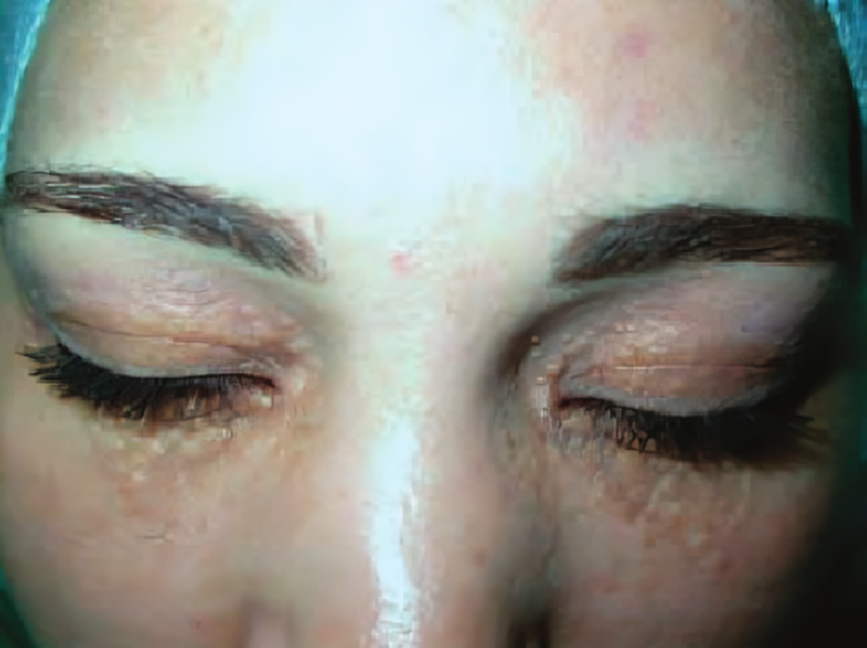
Cryosurgery
Cryosurgery is another minimally invasive technique for removing syringomas. It involves using liquid nitrogen at an extremely low temperature to destroy the syringoma.
Laser Therapy
Laser therapy employs concentrated beams of light waves to destroy the syringoma. It does not result in scarring or cosmetic complications and has lower infection rates than other treatments.
Surgical Syringoma Removal
The surgical removal of syringomas is often a last resort for lesions that are not responding to other treatments or are too large to be removed otherwise. It is often not preferred as it can leave considerable scarring that requires further cosmetic procedures.10Fatima-Zahra Agharbi. (2019). Les syringomes. The Pan African Medical Journal, 32. https://doi.org/10.11604/pamj.2019.32.194.16161
Complications of Syringoma
Untreated syringomas can cause cosmetic issues, including scarring and skin discoloration. They often tend to recur, and as noncancerous growths, they don’t cause any life-serious complications.
How to Prevent Syringoma?
The best way to prevent syringomas is to avoid sweating too much. You can do this by avoiding hot, humid environments, UV exposure, and stressful conditions — stress activates our sympathetic system, which causes even more sweating. You can also keep your hormones in the typical lab ranges, especially during puberty, pregnancy, and menopause (if you are a woman).
What is the duration of Syringoma?
Syringomas usually don’t go away on their own. However, because of their harmlessness and small size, many people don’t seek treatment. If you are concerned about the effect syringomas have had on your appearance, various medications and minimally invasive procedures can help reduce them.
Can you squeeze Syringoma?
No, syringomas stem from sweat glands located deep in the skin. They also have a firm consistency, which prevents you from squeezing them. Squeezing them could cause invisible trauma to your skin, allow bacteria to enter, and cause antibiotic-resistant infections, which are hard to treat.
Syringoma: Benign or Malignant?
Almost all syringomas are benign. Less than 0.005% are of the malignant choroid variant—an extremely low prevalence. Syringomas are one of the lesions least likely to undergo cancerous changes.
Conclusion
Syringomas are benign tumors of the eccrine sweat glands that affect 1% of the world’s population. They are more commonly seen among females and people with Down syndrome or diabetes. Syringomas often resemble other skin conditions. They are treated using medication or different removal techniques. Moreover, they have an excellent prognosis as they do not cause any symptoms except occasional cosmetic concerns. Complications of syringoma include scarring and discoloration of the skin.
Refrences
- 1Deshmukh, R. S., Deo, P. N., Pawar, S. R., & Karandikar, M. (2023). Syringoma – a rare tumor: Case report and review of the literature. Journal of Oral and Maxillofacial Pathology/Journal of Oral and Maxillofacial Pathology, 27(4), 768–771. https://doi.org/10.4103/jomfp.jomfp_415_23
- 2Litvinov, I. V., & Fatemeh Jafarian. (2013). Eruptive syringomas in the groin. CMAJ. Canadian Medical Association Journal, 186(8), 612–612. https://doi.org/10.1503/cmaj.130793
- 3Schepis C, Siragusa M, Palazzo R, Ragusa RM, Massi G, Fabrizi G. Palpebral syringomas and Down’s syndrome. Dermatology. 1994;189(3):248-50. doi: 10.1159/000246847. PMID: 7949476.
- 4Friedman, S. J., & Butler, D. F. (1987). Syringoma presenting as milia. Journal of the American Academy of Dermatology, 16(2), 310–314. https://doi.org/10.1016/s0190-9622(87)70041-3
- 5Lin, L. Y., Nahyoung Grace Lee, Yoon, M. K., & Stagner, A. M. (2022). Clear Cell Syringoma of the Eyelids, a Distinctive Histopathologic Variant Associated with Diabetes Mellitus. Ophthalmic Plastic and Reconstructive Surgery, 39(1), e20–e22. https://doi.org/10.1097/iop.0000000000002254
- 6Kyung Hee Min, Jin Hwan Byun, Jung Soo Lim, Hye Kyung Lee, Won Mi Lee, & Jong Eun Joo. (2016). Chondroid Syringoma on Face. Archives of Craniofacial Surgery, 17(3), 173–175. https://doi.org/10.7181/acfs.2016.17.3.173
- 7Meredith, A., Jenny Maureen Atun, & Fernando, G. (2016, March 30). Multifocal, recurrent malignant chondroid syringoma with visceral metastases: A case report and literature… ResearchGate; International Journal of Cancer Therapy and Oncology. https://www.researchgate.net/publication/305383210_Multifocal_recurrent_malignant_chondroid_syringoma_with_visceral_metastases_A_case_report_and_literature_review
- 8Shea, C. R. (2020, February 7). Syringoma Workup: Procedures, Histologic Findings. Medscape.com; Medscape. https://emedicine.medscape.com/article/1059871-workup
- 9Clinic, C. (2022). Syringoma: What it is, vs. Milia, Causes & Treatment. Cleveland Clinic. https://my.clevelandclinic.org/health/diseases/23321-syringoma
- 10Fatima-Zahra Agharbi. (2019). Les syringomes. The Pan African Medical Journal, 32. https://doi.org/10.11604/pamj.2019.32.194.16161

